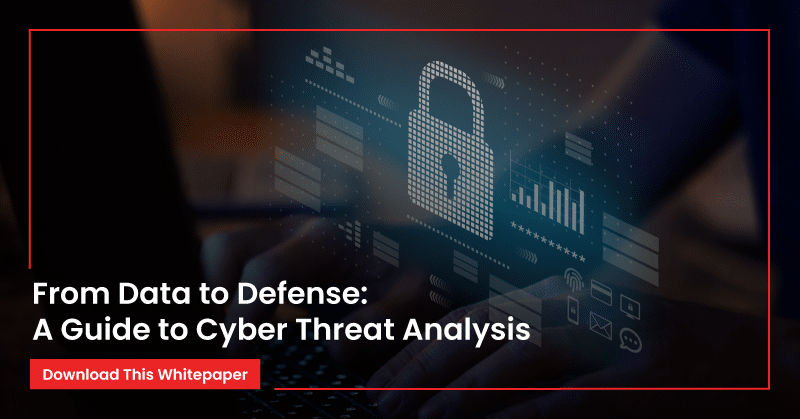



From Data to Defense: A Guide to Cyber Threat Analysis
- Dr. Charlene Coon
- Incident Handling
In the cybersecurity landscape, the rapid advancement of technology has led to a surge in cyberthreat, due to the introduction of new attack surfaces and associated vulnerabilities. Thus, to safeguard critical network infrastructures, organizations need to implement a robust cyber threat data analysis framework. This process of threat intelligence capability involves evaluating policies, identifying vulnerabilities, and proactively analyzing threats. Within EC-Council’s latest whitepaper, “From Data to Defense: A Guide to Cyber Threat Analysis,” we aim to understand the overview of cyber threat data analysis, its relationship with threat intelligence, and its crucial role in strengthening cybersecurity.
The whitepaper explores key components and methodologies, including the threat modeling process, which helps organizations predict, assess, and mitigate potential risks. Additionally, the development of a generic threat matrix is also discussed, highlighting its significance in systematically categorizing and addressing threats across various industries.
Cyber threat analysis benefits multiple stakeholders, and by leveraging real-time data analytics, organizations can detect emerging threats, respond effectively, and enhance their overall security posture. The paper also examines leading threat intelligence tools that facilitate data collection, analysis, and response, allowing security teams to make informed decisions and develop proactive defense mechanisms.
Cyber threat data analysis is an ongoing process that demands continuous monitoring, adaptation, and collaboration among cybersecurity professionals. Organizations must engage diverse stakeholders, regularly update security measures, and align with the latest threat intelligence tools to stay ahead of evolving cyber risks. A crucial aspect of cyber threat data analysis is scalability with regard to the expansion of digital infrastructure via cloud or IoT. AI and ML technologies enable scalable big data solutions that can process vast amounts of information, identify patterns, and predict potential cyber threats.
In conclusion, “From Data to Defense: A Guide to Cyber Threat Analysis” serves as a guide to security experts across various industries, towards developing an effective cyber threat data analysis by integrating advanced analytics, automation, and expert insights. To gain in-depth insights into developing robust threat modeling, intelligence policies, and strengthening network defenses, download the full whitepaper by submitting your details in the form below. Stay ahead of cyber threats by ensuring a proactive approach to cybersecurity threat intelligence.






